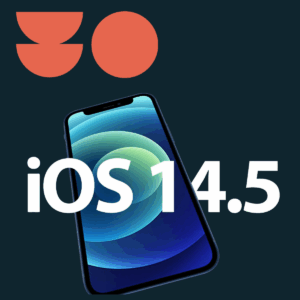Over a year has passed since the introduction of IOS14 & 14.5 which changed the landscape of Meta advertising. This blog will talk through the updates and the detrimental effects this ultimately had on paid social advertisers.
iOS 14 & 14.5 Update Changes – What is it?
Perhaps one of the most significant changes arising from the updates was that Apple limited the amount of data Meta could get from their users. Apple launched the App Transparency feature which asked the user for permission every time an app requested their IDFA (Apple’s Identifier for Advertisers).
This prompt allows users to ask the app not to track and, if selected, prevents any user activity being tracked across company apps and websites.
Since Apple’s new privacy feature the rate of opt-in figures has, unsurprisingly, been low. According to Statista as of April 2022, the opt-in rate was at 25%.
What does this mean for Meta advertising?
With the majority of consumers choosing to opt out of data, there has been a significant impact on the amount of data marketers are now able to collect.
As a result of the update, Meta Pixel is now unable to track user’s activity properly, which is a big change to adjust to. Advertisers now report far fewer clicks on their advertisements as people choose to opt out of tracking. As a result, the conversions that are made cannot be reported on as granulary; for example, demographic data is no longer collected, meaning that advertisers can no longer use this information to personalise ads. Consequently, this has made it more difficult when optimising ads and caused a notable decrease in performance for all campaigns.
Another clear impact of the update is the lack of audience data that can be used for remarketing purposes. Meta audiences is one of the reasons that advertising through these platforms was so popular. Targeting users through lookalike, remarketing and custom audiences is now limited in its capabilities. To tackle this, campaigns should target a broader audience using interest marketing, this will allow Meta to use their own data to put your ads in front of people likely to convert.
Aggregated Events Management
In addition to the reduction of user data that Meta can access, there is also no real-time reporting in Meta and results can take up to 3 days to appear. In response to this, Meta developed the aggravated events management system to help advertisers with reporting. This requires brands to limit their conversion events to 8 per domain. Meta Events Manager now only tracks the last single event made by the user, it’s therefore important to prioritise the order of conversion events. It’s also vital to have your domains verified in order to have this working effectively, so keep an eye out for the warning sign that will tell you if it’s not.
How can agencies respond to this new normal for Meta Ads?
- Verify your domain: This tells Meta that you are a legitimate business and allows for the 8 conversion events to be assigned to that domain.
- Set up Aggregated Event Management: You can set up 8 conversion events. Meta will only track the last conversion event with the highest priority.
- Target broad Audiences :Targeting large audiences with similar interests will allow Meta to put your ads in front of the right people.
Summing up the IOS 14 & 14.5 Updates
The IOS 14 and 14.5 updates have had a huge impact on how advertisers utilise Meta for advertising. The updates mean it’s no longer as efficient as it has been before, but there are still things we can do to give our campaigns the best chance of succeeding. After all, advertisers are known for adapting to change and, as such, we must stay vigilant for any more updates in the paid social scene and run with these changes.

